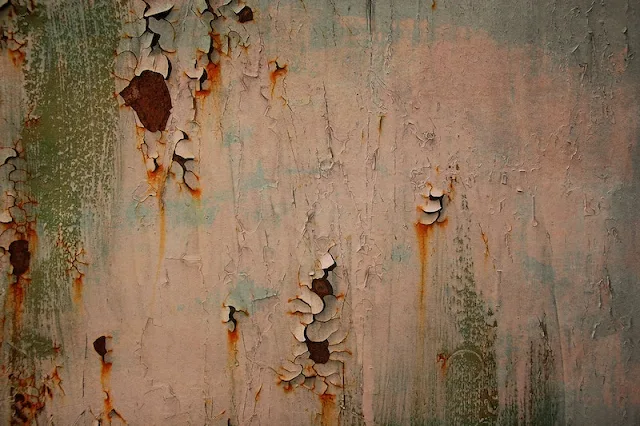The open sea hides an insidious enemy: the unrelenting combination of saltwater and humidity. This dynamic duo accelerates the corrosion of metals and degrades electronic equipment faster than you might expect. The maritime environment is beautiful but hostile to our gear, so understanding and mitigating these challenges is a must for every sailor. Here, we delve into the intricacies of maritime corrosion and offer comprehensive strategies to ward off its effects.
 |
| Corrosion on a hull |
Why Saltwater and Humidity are a Deadly Combo for Your Gear
Saltwater, laden with a myriad of minerals, is a potent conductor of electricity. It promotes rapid oxidation when it encounters metal, leading to rust. Couple this with the heightened humidity levels ubiquitous at sea, and you've got a breeding ground for corrosion. For electronics, which depend on their intricate internal configurations, even minor corrosion can be catastrophic.
A Proactive Routine to Counteract Corrosion
Regular Freshwater Rinses
Begin with basics. At the conclusion of each journey or day, rinse off accumulated salt using freshwater. It's a simple yet effective preventive measure.
Ventilation is Essential
Maximize airflow throughout the vessel. Enclosed spaces need to breathe to eliminate trapped moist air, a significant accelerator of rust.
Anti-Corrosive Sprays
Numerous marine-specific anti-corrosive sprays can be your metal's best friend. A routine spray shields metals, offering a frontline defense against salt and moisture.
Silica Gel Packs
These are invaluable in storage spaces, particularly around electronics. These desiccants absorb ambient moisture, preserving the dryness of their surroundings.
Consistent Maintenance Checks
Establish a regular schedule to inspect your vessel for emerging rust. Addressing corrosion in its early stages simplifies its removal.
Invest in Marine-Grade Electronics
Designed specifically for marine conditions, these electronics offer a superior defense against the corrosive maritime atmosphere.
Embrace Protective Coatings
Consider applying protective coatings or marine paints on exposed metal components. This not only enhances their lifespan but also curtails frequent maintenance expenses.
Storage Cases
Water-resistant or waterproof cases, especially for electronics, can provide an extra layer of protection. They keep out the elements, ensuring that your gadgets remain safe even in damp conditions.
Deploy Dehumidifiers
For extended voyages or in consistently humid conditions, a marine dehumidifier can be an asset. It works tirelessly to extract excess moisture from the air, maintaining a drier cabin atmosphere.
Use Vinegar and Baking Soda to clean Drains
Calcium can build up in your drains, so it's important to get rid of it by using vinegar and baking soda to dissolve the calcium salt.
Natural Resources as Allies
Simple solutions like hanging bags of rice in storage compartments can absorb excess moisture. Cedarwood balls or planks not only repel moths but also absorb humidity, offering a two-pronged advantage.
Proactive Corrosion Prevention
Here some additional thoughts from my experience to proactively preventing corrosion:
1. Choice of Materials
Stainless Steel: It's a preferred material for many boat parts because of its resistance to rust. However, even stainless steel has its limits. Different grades of stainless steel have different resistances to corrosion. Ensure you're using marine-grade stainless steel where appropriate.
Bronze and Brass: These are commonly used for fittings and fastenings due to their good resistance to corrosion. But be wary of galvanic corrosion when they're in contact with other metals.
2. Electrical Grounding and Bonding
Proper grounding and bonding are critical. A stray current in your boat can accelerate corrosion in metallic parts submerged in water, like propellers. Ensure your boat's electrical system is correctly grounded and periodically inspected.
3. Use of Tef-Gel or Lanolin
When assembling metal fittings, use anti-seize agents like Tef-Gel or natural products like Lanolin. They can prevent seizing, galling, and corrosion at the interface of different metals.
4. Avoiding Moisture Traps
Areas where saltwater can become trapped and stagnate, like the crevices behind fittings, are prone to corrosion. Regularly inspect these areas and keep them clean.
5. Proper Storage of Electronics
If possible, after sailing, store electronics like GPS, radios, or other navigational aids in a dry, cool place. Before storage, make sure they're wiped down and are salt-free.
Closing Thoughts
A boat's battle with corrosion is continuous, but with understanding and meticulous care, you can keep your vessel looking pristine and functioning efficiently. Remember, the money and time you invest in prevention will often save you many folds in future repair or replacement costs.
Always a handful water under your fin!
Comments
Post a Comment